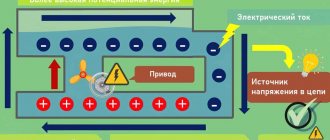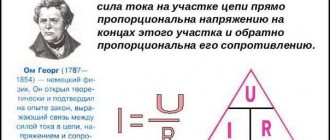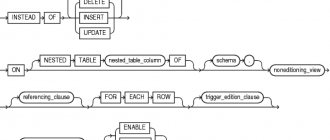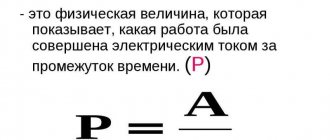Many of you have probably seen on power tools, engines, as well as fluorescent lamps, DRL lamps, HPS lamps and others, such inscriptions as cosine phi - cos ϕ.
However, people who are far from electrical engineering and have forgotten their school physics lessons do not quite understand what this parameter means and why it is needed at all.
Let's look at and explain this cosine in as simple words as possible, excluding any obscure scientific definitions such as electromagnetic induction. Of course, you can’t tell about it in two words, but you can try it in three.
What is PF?
Power factor is a complex indicator characterizing energy losses in the electrical network caused by phase and nonlinear distortions of current and voltage in the load. … The lower the power factor of a load, the more that load puts stress on the source and wires.
Interesting materials:
How much was the pound worth in the 19th century? How much does 1 km according to Plato cost? How much does 1 cubic meter of cement cost? How much does analgin cost in tablets? How much does badger fat cost? How much does a ticket from Moscow to Seychelles cost? How much does a ticket to a Barça match cost? How much does the Boeing 737 MAX cost? How much does the display cost on Samsung A 50? How much does a Range Rover jeep cost?
When current lags behind voltage
Suppose there are 2 conductors in front of you. One of these conductors has potential. It doesn’t matter which one - negative (minus) or positive (plus).
The other wire has no potential at all. Accordingly, there will be a potential difference between these two conductors, because one has it and the other doesn't.
This potential difference is precisely what is called voltage.
If you connect the ends of two wires not directly to each other, but through an incandescent light bulb, then current will begin to flow through its tungsten filament. From one wire to another.
At first glance, it may seem that the light bulb lights up instantly. However, it is not. The current passing through the filament will increase from its zero value to the nominal value for a certain time.
At some point he reaches it and stays at this level constantly. The same thing will happen if you connect not one, but two, three light bulbs, etc.
What happens if, together with a lamp, a coil wound from many turns of wire is connected in series?
Will the process of current rise change somehow? Of course yes.
This inductor will noticeably slow down the time the current increases from zero to maximum. In fact, it turns out that the maximum voltage (potential difference) on the lamp already exists, but the current will not keep up with it.
Its rise is too slow. Why is this happening and who is to blame? The coil turns are to blame, as they influence each other and inhibit the current.
If you have a constant voltage, for example, as in batteries or batteries, the current is relatively slow, but still has time to grow to its nominal value.
And then, the current will flow together with the voltage, which is called “foot in foot”.
But if you take the voltage from an outlet with a variable sine wave, then here it is not constant and will change. At first U is a positive value for some time, and then negative, and the amplitude is the same. In the figure this is depicted as a wave.
These constant oscillations do not allow our current passing through the coil to reach its steady value and catch up with the voltage. As soon as it approaches this value, the voltage already begins to drop.
Therefore, in this case they say that the current lags behind the voltage.
Moreover, the more turns are wound in the coil, the greater this delay will be.
How does all this relate to the cosine phi - cos ϕ?
Formulas for the product of trigonometric functions
11.1)Product of sines
formula for the product of sines11.2)Product of cosines
product of cosines formula11.3)Product of sine and cosine
formula for the product of sine and cosine11.4)Product of tangents
tangent product formula11.5)Product of cotangents
cotangent product formula11.6)Product of tangent and cotangent
formula for the product of tangent and cotangent12)Formulas for the sum of trigonometric functions
09.1)Sum of sines
sum of sines formula09.2)Sum of cosines
sum of cosines formula09.3)Sum of tangents
tangent sum formula09.4)Sum of cotangents
formula for the sum of cotangents09.5)Sum of sine and cosine
formula for sum of sine and cosine10)Active and reactive power
There is such a thing as a power triangle. The cosine itself is a trigonometric function, which appeared when studying the properties of right triangles.
It helps a lot to perform certain calculations with them. For example, it clearly shows the ratio of the lengths of the adjacent leg (P-active power) to the hypotenuse (S-total power).
That is, knowing the shift angle, you can find out how much active power is contained in the total. The smaller this angle, the less reactive component is in the network, and vice versa.
Just don’t confuse cos ϕ with efficiency. These are different concepts. The reactive component is not consumed, but is “returned” to the substation into the network, i.e. in fact there is no loss of it. Only a small part of it can be spent on heating the wires.
In efficiency, everything is more clear - useful power is used for heating - cooling - mechanical work, the rest is lost forever. This difference is shown in efficiency.
In more detail, with graphs, drawings and simple words, without any special scientific formulations, all this is discussed in the video below.
Recommendations for reducing the harmonic components of the supply voltage
To reduce voltage harmonics, it is recommended to do the following:
To implement these recommendations, it is advisable to refer to the manufacturers’ instructions and specialists.
In addition, it is recommended to check the condition of the supply wires, cables, terminals, transition resistances of power connections of phase and neutral wires, the quality of grounding connections of electrical appliance housings, etc. As a result of the inspection, converters with disconnected grounding were identified.
Video
Coffee capsule Nescafe Dolce Gusto Cappuccino, 3 packs of 16 capsules
1305 ₽ More details
Coffee capsules Nescafe Dolce Gusto Cappuccino, 8 servings (16 capsules)
435 ₽ More details
Docking stations
Formulas for the difference of trigonometric functions
10.1)Sine difference
formula for difference of sum of sines10.2)Difference of cosines
formula for difference of sum of cosines10.3)Tangent difference
tangent sum difference formula10.4)Cotangent difference
cotangent difference formula10.5)Difference between sine and cosine
formula for the difference between sine and cosine11)Formulas for the sum and difference of various trigonometric functions
13.1)Sum of sine and cosine
formula for sum of sine and cosine13.2)Difference between sine and cosine
formula for the difference between sine and cosine13.3)Sum of sine and cosine with coefficients
formula for the sum of sine and cosine with coefficients13.4)Difference between sine and cosine with coefficients
formula for the difference between sine and cosine with coefficients14)Negative cosine
From the school geometry course we know that cos (φ) = cos (-φ), that is, the cosine of any angle will be a positive value. But how can you distinguish an inductive load from a capacitive one? It's simple - electricians in all countries have agreed that when there is a capacitive load, a minus sign is placed in front of the cosine sign!
In the practice of using the HIOKI voltage analyzer, I had cases when the cosine value was negative. Subsequently, it turned out that the compensating installation was turned on incorrectly and overcompensation occurred. That is, cos φ Reactive power factor Tangent φ
Often more convenient is the reactive power factor tan φ, which shows the ratio of reactive power to active power. It is clear that at tan φ = 0 the ideal cos φ = 1 is achieved.
Half argument (angle) formulas
04.1)Sine of half angle
sine of half angle formula04.2)Cosine of half angle
half angle cosine formula04.3)Tangent of half angle
tangent of half angle formula04.4)Cotangent of half angle
half angle cotangent formula04.5)Tangent of half angle
tangent of half angle formula04.6)Cotangent of half angle
half angle cotangent formula05)Low power factor and its consequences
The considered current lag relative to voltage is not a good phenomenon. How might it affect your light bulbs or wiring?
- firstly, this is increased electricity consumption
Some of the energy will simply “hang out” in the coil, without bringing any benefit. Don’t be alarmed though, your household meter doesn’t count reactive energy and you won’t pay for it.
For example, if you plug in a tool or lamp with a full power of 100VA, the power supply will indicate cos ϕ=0.5. Then the meter will only charge you half of this value, that is, 50W.
But the entire load will pass through the power wires, heating them up with useless work.
- the amount of current in the wiring will increase
Here is a famous visual video showing the consequences of this on wiring.
- for power stations and transformers it is harmful due to overload
It would seem that throw away the coil and the whole problem will disappear. However, this cannot be done.
In most lamps, lamps do not work separately, but in conjunction with power sources. And in these same sources, there are a variety of coils.
The coils are simply necessary as a functional part of the entire circuit and you cannot get rid of them. For example, in the same throttling lamps DRL, DNAT, fluorescent, etc.
Therefore, the characteristic coefficient. power, here relates more to the power supply than to the lamp itself. This cos ϕ can take a value from zero to one.
Zero means that no useful work is done. One - all energy goes to doing useful work.
The higher the power factor, the lower the energy losses. Here is the cosine phi table for various consumers:
Basic trigonometric identities
01.1)Fundamental trigonometric identity
formula of the basic trigonometric identity01.2)Basic identity through tangent and cosine
formula of the main identity through tangent and cosine01.3)Basic identity through cotangent and sine
formula of the main identity through cotangent and sine01.4)Relationship between tangent and cotangent
formula for the relationship between tangent and cotangent02)Double argument (angle) formulas
02.1)Sine of double angle
double angle sine formula02.2)double angle sine formula02.3)Cosine of double angle
double angle sine formula02.4)double angle sine formula02.5)Tangent of double angle
double angle sine formula02.6)Cotangent of double angle
double angle sine formula03)Units
Sometimes the question arises in what terms this coefficient is measured if it is described as a dimensionless quantity. It is usually indicated as a percentage or in hundredths; in the second case, the values range from 0 to 1.
In order for devices connected to the electrical network to be used for as long as possible, you need to know what the cos f indicator is in electricity and how to determine it correctly. Its significance must be taken into account when connecting devices and their further operation.











